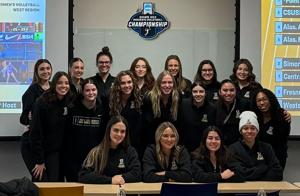The Fairfield Day Academy, located in a quiet residential neighborhood, has become a beacon of hope for children with developmental challenges. The campus, resembling a large ranch-style house, is primarily staffed by Dr. Bob, the only full-time professional at the facility. While insurance providers like Blue Cross do not cover many of the innovative treatments offered, the Academy attracts families seeking alternative solutions for their children.
Among the mothers who volunteer at the Academy, Emma has found a supportive community. She interacts with diverse families, including a Black mother from Bridgeport and a white graduate from Smith College, both united in their commitment to their children’s progress. The Academy’s living room serves as an occupational therapy gym, equipped with monkey bars, weights, and patterning tables. Every morning, mothers guide their children through a structured therapy circuit that culminates in the Listening Circle, where the children learn to identify nature sounds, aimed at enhancing their speech and language skills.
For Emma, the therapy has made a significant impact on her daughter, Carla. Initially diagnosed with severe developmental delays, Carla has shown improvements in mobility and engagement since attending the Academy three times a week. Under Dr. Bob’s guidance, she has started to explore music, playing the xylophone for her peers. Despite being nearly four years old and still refusing to speak, Emma believes Carla is absorbing valuable lessons.
To manage the Academy’s tuition costs, Emma volunteers her time, which provides a partial discount. To cover the remaining expenses, she takes on additional work, addressing envelopes for just two cents each. Financial pressures mount as they take out a second mortgage and borrow from family friends, the Faimans, to ensure Carla continues her therapy.
The dynamics within the family are complex. Catherine, Emma’s older daughter, navigates her feelings toward Carla with difficulty. At just eight years old, she has become independent, wearing a house key around her neck and keeping it hidden from her peers. Catherine grapples with feelings of resentment and shame, stemming from her sister’s condition. Despite the reassurances from parents and therapists that “there’s nothing wrong with Carla,” Catherine views her sister’s behavior as overwhelming and challenging.
Catherine’s struggles are compounded by harsh realities at school. The taunts from classmates, particularly the Muller children, have left her feeling isolated and embarrassed. As she copes with schoolyard bullying, Catherine’s parents attempt to offer her support by allowing her to keep a stray cat, which she names Trismegistus, reflecting her father’s interest in mythology. Yet, the cat soon disappears, leaving Catherine with another source of disappointment.
Despite the challenges, Catherine’s father, Jasper, encourages her to embrace life’s adventures. He teaches her to swim and ride a bike without training wheels, preparing her for a future beyond Milford. Their weekends are filled with family games and stories, creating moments that Catherine cherishes.
After 18 months at the Academy, a breakthrough occurs when Carla begins to speak in full sentences. One day, as Emma washes dishes, Carla approaches her and asks to go outside. This moment marks a turning point for the family. Although Carla initially struggles with speech, her therapy sessions have instilled a newfound confidence, and she is set to begin first grade in Milford.
Despite the family’s progress, Emma grapples with her own emotions. On Valentine’s Day, she bakes a heart-shaped cake, hoping to find joy amidst her lingering depression. Her feelings are complicated by the burden of financial strain and the demands of family life, yet she remains dedicated to her daughters and their futures.
As Catherine grows older, she finds it difficult to recall her childhood in Milford. Memories of family outings and school experiences fade, overshadowed by the complexities of her relationship with Carla. She recalls moments of isolation and bullying as she navigates the treacherous landscape of childhood friendships, ultimately seeking solace in her independence.
The journey through Fairfield Day Academy has not only transformed Carla’s life but has also deeply impacted the entire family. As they continue to face challenges, their experiences highlight the resilience of both children and parents in the pursuit of understanding and acceptance.


































































